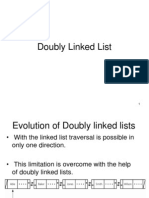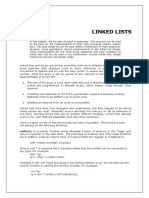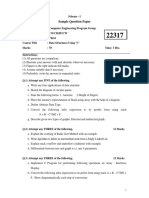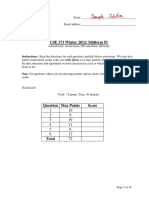0% found this document useful (0 votes)
4 views7 pagesDoubly Linked List-Keynotes
The document provides routines for inserting and deleting nodes in a doubly linked list. It includes methods for inserting nodes at the beginning, end, and middle of the list, as well as deleting nodes from the beginning, end, and middle. Each routine is implemented in C++ and includes comments explaining the logic and operations performed.
Uploaded by
kji.cseCopyright
© © All Rights Reserved
We take content rights seriously. If you suspect this is your content, claim it here.
Available Formats
Download as DOCX, PDF, TXT or read online on Scribd
0% found this document useful (0 votes)
4 views7 pagesDoubly Linked List-Keynotes
The document provides routines for inserting and deleting nodes in a doubly linked list. It includes methods for inserting nodes at the beginning, end, and middle of the list, as well as deleting nodes from the beginning, end, and middle. Each routine is implemented in C++ and includes comments explaining the logic and operations performed.
Uploaded by
kji.cseCopyright
© © All Rights Reserved
We take content rights seriously. If you suspect this is your content, claim it here.
Available Formats
Download as DOCX, PDF, TXT or read online on Scribd
/ 7






















































































